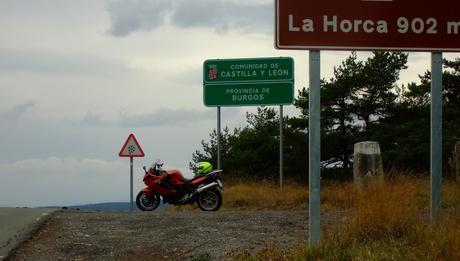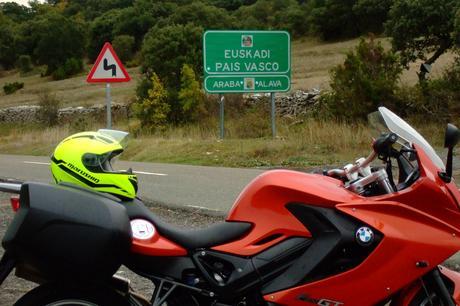.
In the last chapter of my series The Basque trail I punished the readers with a dull share of History, and today I want to reward them with something more “pictorial and digestible”: let’s do one of the most beautiful and scenic bike routes in the Basque Country, to the very boundary of Álava, its most hidden, remote and forlorn corner. Heading the twilight, we’ll pass through singular Añana and tranquil Espejo, reach Bóveda, beyond Burgos province, and yet ride a few more kilometres until the boundary, “where the wind turns round”.
Ready?
It’s a cloudy, yet not rainy day, and temperature is fine. I take Rosaura, my bike, from downtown Vitoria direction to madrid for a few kilometres, then turn off by Nanclares, along a road that will take me through surprising settings and lovely villages, of which the less unknown is perhaps Añana, because of its peculiar (and almost unique in Spain) salt valley, whose subterranean aquifers, passing through salty sediments, well up brines (240 grams per litre!) that have been exploited during longer than one millennium, until quite recently, for extracting the “white gold” by evaporation. Right by the village, thousands of platforms or farms, channels, wells and stores shape this valley’s singular landscape, though the end of all activity by mid XXth century has meant a severe deterioration of the woodworks and structures.
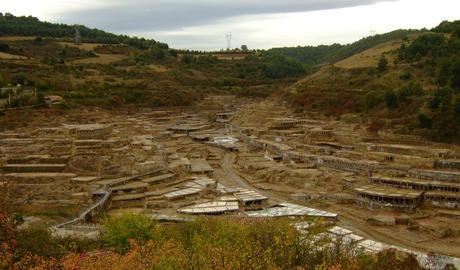
Añana’s salt valley
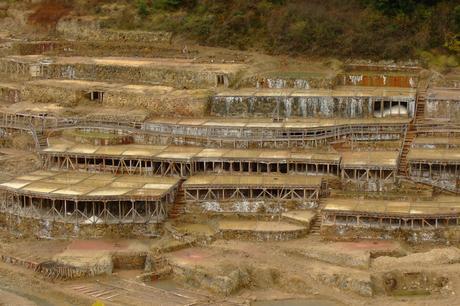
Detail of the salt mines, now being recovered.
Añana, a pure Roman place name (now artificially changed into a Basque-friendly one by preceding it with gesaltza, meaning salt mine in Basque language), is one of the oldest settlements in Álava, and flourished thanks to the salt trade, a very valuable good along the whole middle ages; and it was a Castilian town since its very origin until XVIIth c., when it was assigned to Álava province; a piece of information that those who claim independence for the Basque country for “historical reasons” (more imaginary than real) should perhaps take into account.
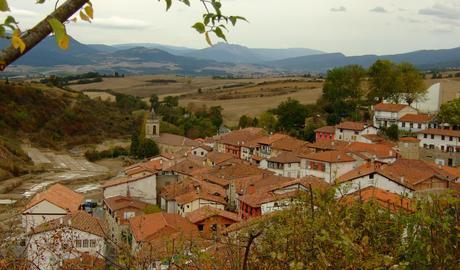
Añana from its overlooking hill. In the background the outermost Álava.
Despite its ethnographic merit, though, it wasn’t the salt mines what most called my attention about this pretty village, but its milieu of sown fields and groves, the strange layout of its narrow and steep streets, and most of all the romantic neglect about one of its most fine buildings, the Zambrana-Herrán palace.

Zambrana-Herrán place, half abandoned behind its garden’s walls.
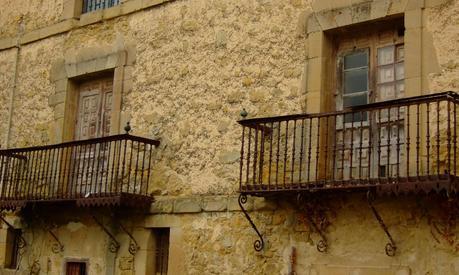
The sad balconies of the palace, dreaming of their youth.
These old buildings of aged rural Spain inspire my daydreaming and fuel my nostalgic spirit, my romantic fantasy, always looking back, towards former times. There’s something of irresistible in the pass, to me. And I mean the past, not the history.

Añana’s peaceful and looked after streets.
As to the environment, from an aesthetical point of view, it’s not the salt mines what I like the best, certainly, but the countryside, the hills, the groves…

A stripe of the road swallowed up by the landscape.
And that’s the road I’m going to follow, diving into the wild.
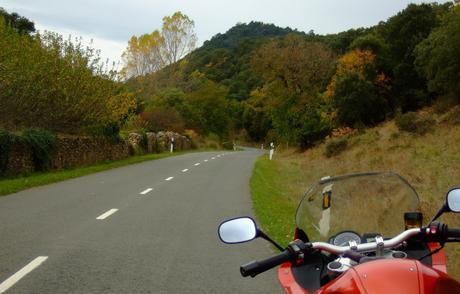
The road towards Castile goes right through the landscape.
After fully exploring Añana and its surroundings on foot, I carry on with the bike towards Espejo, another endearing and snug village, with its traditional look and the genuine flavour of its houses, with that little and outdated tavern by the road, unbelievably stuck in time, where it’s almost impossible not to stop for a wine in the company of the locals, quite aged as well. On the bar walls, old photographs hung worthy of a spot in a museum.
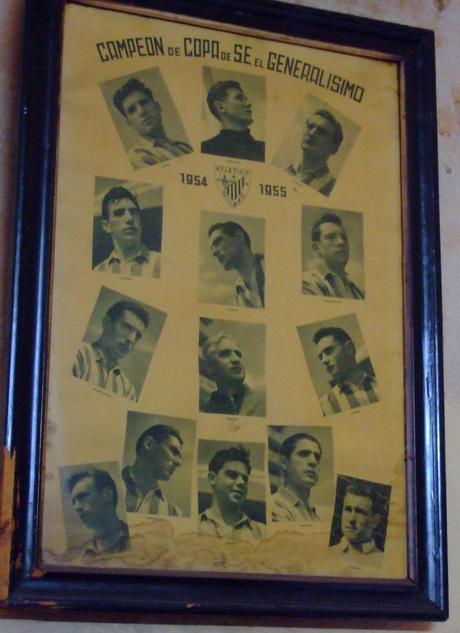
The Generalísimo (Franco) Cup 1954-1955. Quite a treasure.
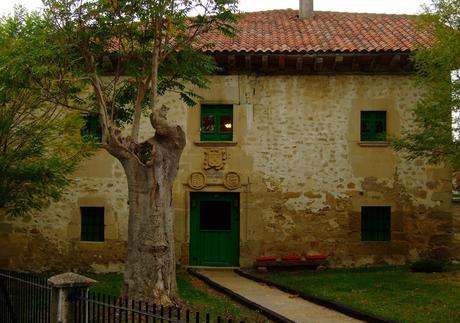
Espejo. There’s a special magic in the light behind the window panes on a gray autumn afternoon.
Pocas cosas disfruto tanto como estas incursiones hacia atrás en el tiempo que me hacen revivir los días de mi niñez, aquellos bares de mi pueblo, los mostradores de madera, las paredes desconchadas por la humedad, los viejos jugando al tute sobre algún tapete manchado de vino, en las mesas de formica…
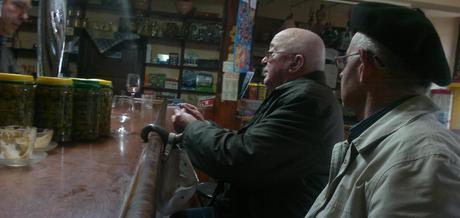
Tomando un vino en el bar de Espejo.
Mas aún queda lo mejor de esta ruta, cuando la carretera se adentra en un paisaje de arboleda que ofrece, a cada golpe de vista, toda la extensa paleta de colores otoñales.
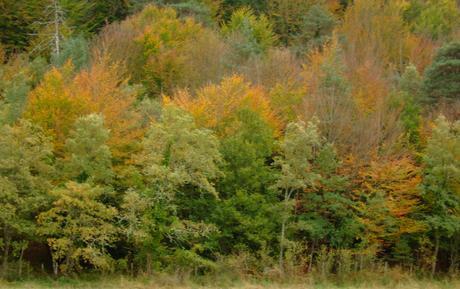
Paleta de colores otoñales.
Estamos a caballo entre Castilla y País Vasco, pues aquí Álava hace un istmo para engolfar por último a un puñado de minúsculas localidades. Administrativamente es Euskadi, pero esto no tiene ya nada de vascuence.
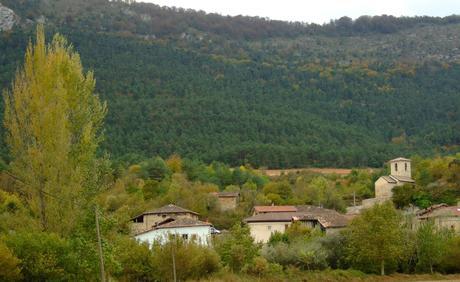
La aldea de Tobillas, bajo los pinares del risco que linda con Burgos.
Y antes del collado que hace de frontera geográfica, donde muere por fin Álava, nos encontramos con Bóveda, un pueblo que sería impecable en su armonía si no la hubiese estropeado cierta majadería arquitectónica de antojos modernistas.
-

- Fachada de una casa en Bóveda.
-

- Bóveda. Una de sus casas.
-

- Curioso caserío en Bóveda.
-

- Un verdadero tesoro, símbolo de la España rural.
-

- Vieja casa medio abandonada. Bóveda.
-

- ¿Por qué los alcaldes permiten estas cosas?
-

- A alguien le han pagado por esto con dinero público.
Y cinco quilómetros más allá, atravesando unos páramos pedregosos de peculiar geología, acaba oficialmente Vascongadas y comienza Castilla. Este es el verdadero confín de Álava, el rincón más remoto y quizá olvidado de la provincia. Estamos en el puerto de La Horca. Con un poco de imaginación, aquí parece, glosando a Torrente Ballester, que da la vuelta el aire.
